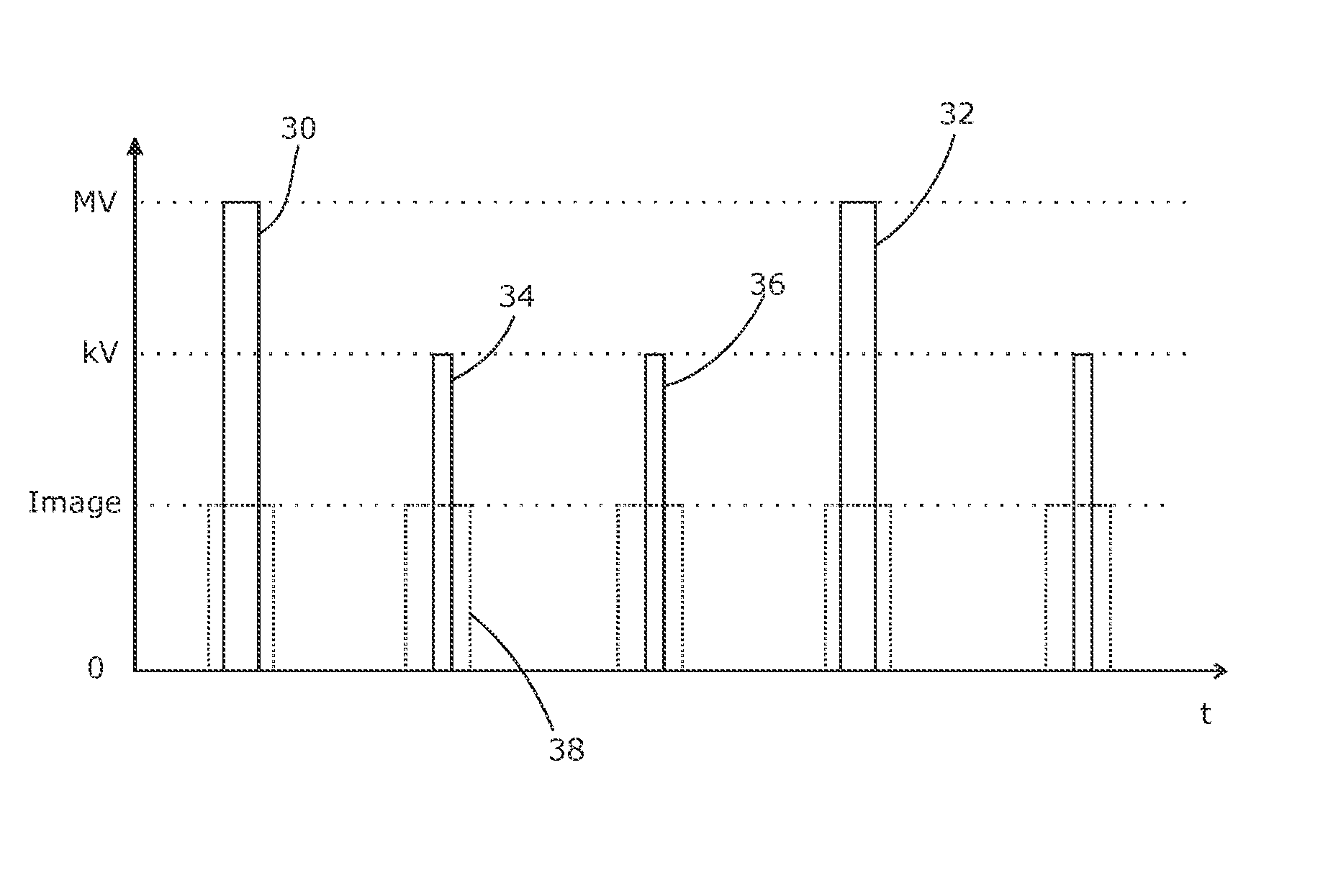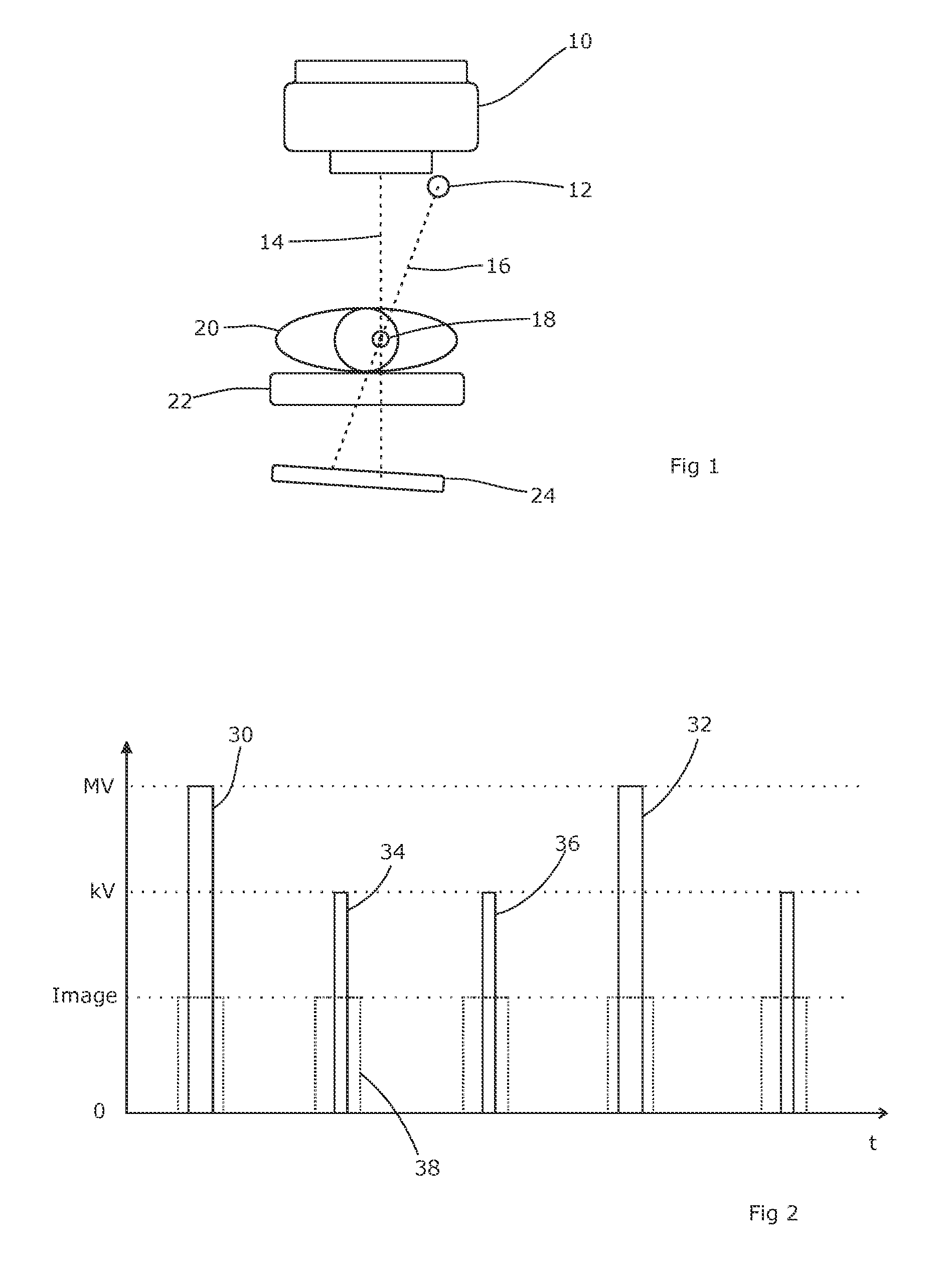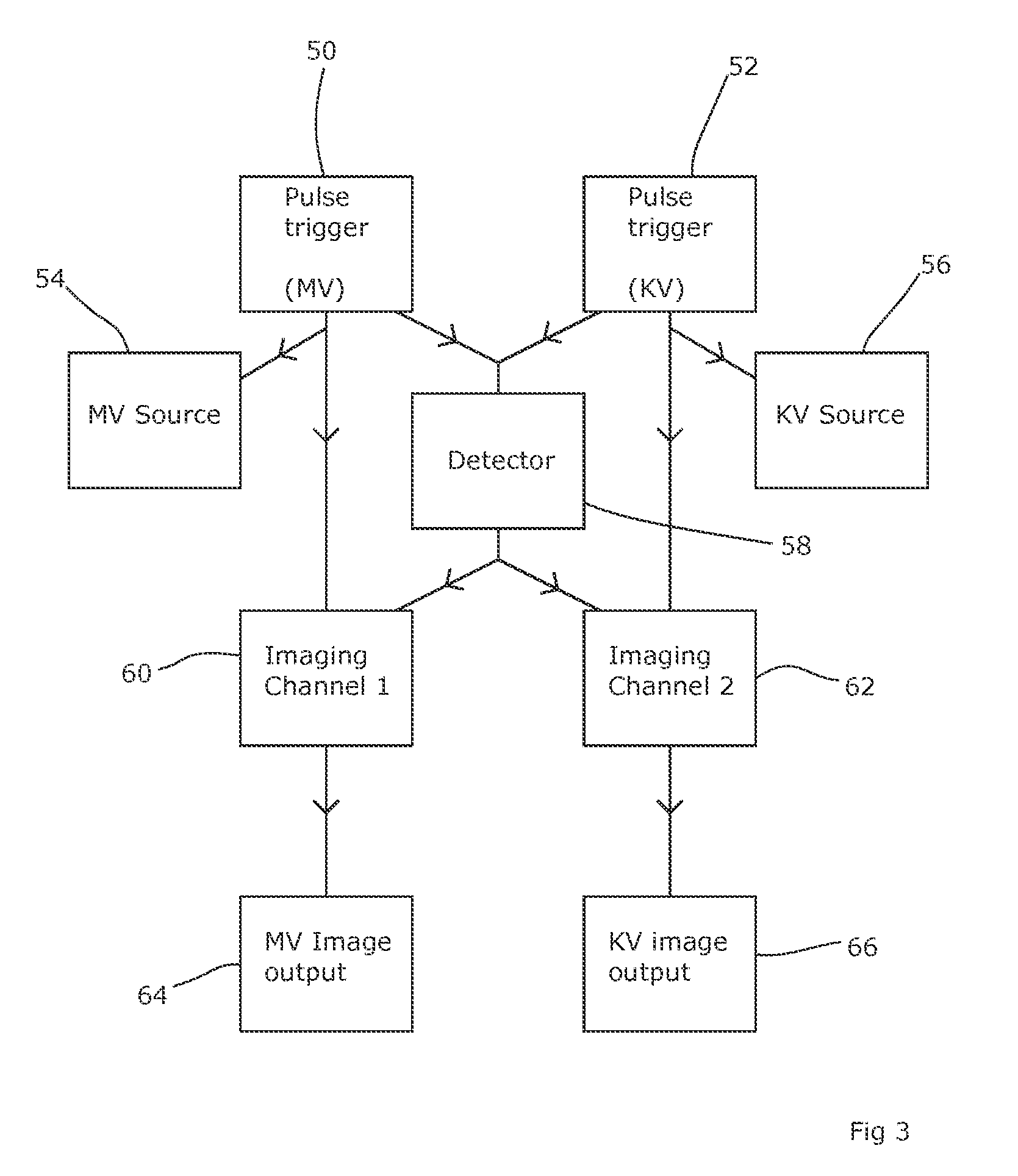Imaging during radiotherapy
a radiotherapy and patient technology, applied in the field of imaging during radiotherapy, can solve the problems of delay in treatment and inability to collect patients simultaneously, and achieve the effect of reducing the material cost of the system
- Summary
- Abstract
- Description
- Claims
- Application Information
AI Technical Summary
Benefits of technology
Problems solved by technology
Method used
Image
Examples
Embodiment Construction
[0017]An MV beam for use in radiation therapy is typically delivered in pulses lasting 3-5 us, with a pulse repetition frequency (“PRF”) between 100-500 Hz. Accordingly, there is plenty of time (between 2 and 10 ms) to send a kV pulse of imaging radiation in between the MV pulses. By using a fast detector with a very short afterburn time (i.e. the time required for the effects of the MV pulse to dissipate), one can send one or more kV pulses between each MV pulse. This will allow the kV and MV pulses to be read and processed with the same detector, and still kept them separate from each other throughout the image processing.
[0018]A suitable detector meeting these requirements is a GEM-type detector (“Gas Electron Multiplier”). Such detectors are disclosed in WO99 / 21211, the content of which is hereby incorporated by reference and to which the skilled reader is directed for a complete understanding of the present invention. GEM detectors comprise a pair of plates separated by a suita...
PUM
 Login to View More
Login to View More Abstract
Description
Claims
Application Information
 Login to View More
Login to View More - R&D
- Intellectual Property
- Life Sciences
- Materials
- Tech Scout
- Unparalleled Data Quality
- Higher Quality Content
- 60% Fewer Hallucinations
Browse by: Latest US Patents, China's latest patents, Technical Efficacy Thesaurus, Application Domain, Technology Topic, Popular Technical Reports.
© 2025 PatSnap. All rights reserved.Legal|Privacy policy|Modern Slavery Act Transparency Statement|Sitemap|About US| Contact US: help@patsnap.com



